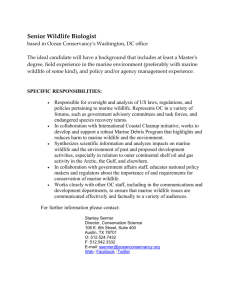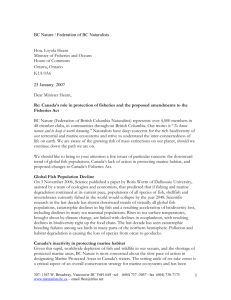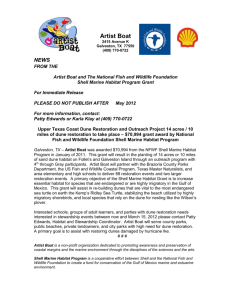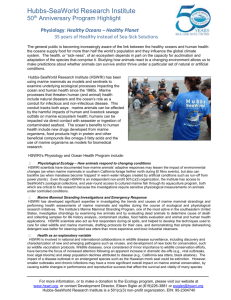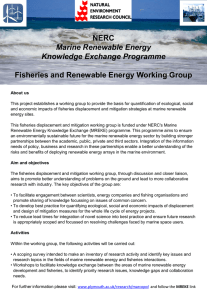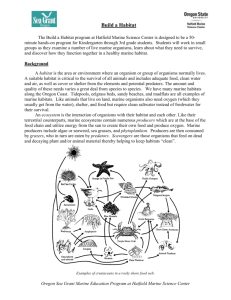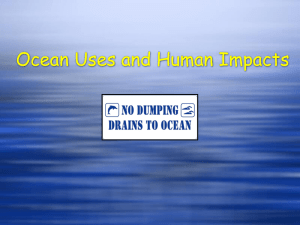conservation toolkit - Ecology Action Centre
advertisement
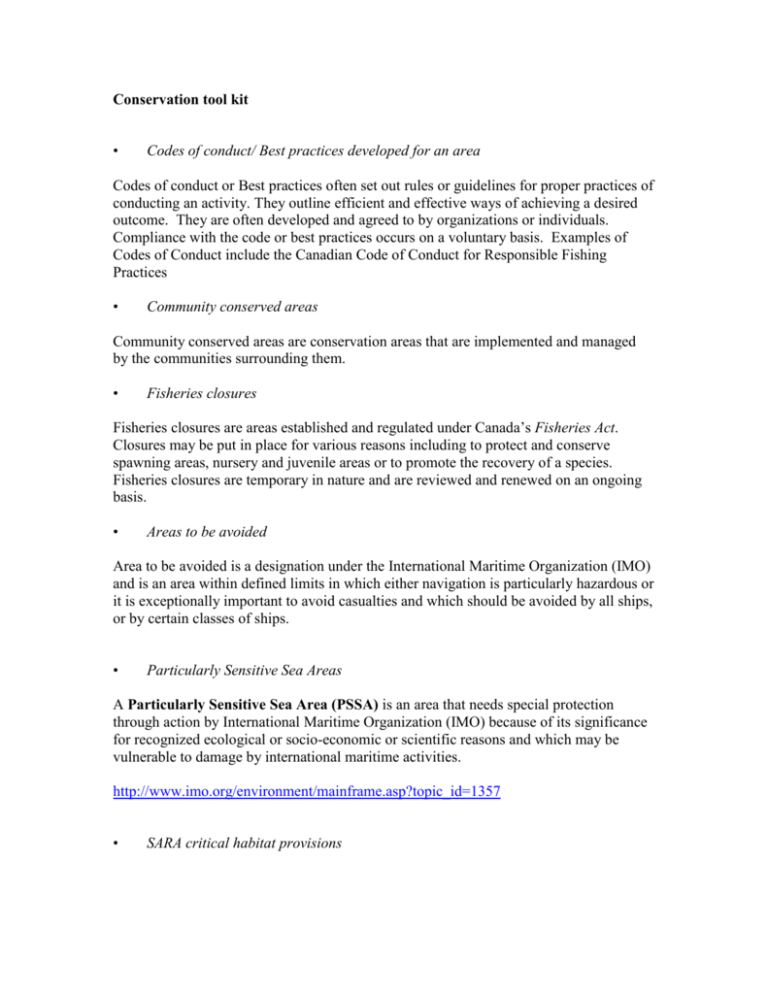
Conservation tool kit • Codes of conduct/ Best practices developed for an area Codes of conduct or Best practices often set out rules or guidelines for proper practices of conducting an activity. They outline efficient and effective ways of achieving a desired outcome. They are often developed and agreed to by organizations or individuals. Compliance with the code or best practices occurs on a voluntary basis. Examples of Codes of Conduct include the Canadian Code of Conduct for Responsible Fishing Practices • Community conserved areas Community conserved areas are conservation areas that are implemented and managed by the communities surrounding them. • Fisheries closures Fisheries closures are areas established and regulated under Canada’s Fisheries Act. Closures may be put in place for various reasons including to protect and conserve spawning areas, nursery and juvenile areas or to promote the recovery of a species. Fisheries closures are temporary in nature and are reviewed and renewed on an ongoing basis. • Areas to be avoided Area to be avoided is a designation under the International Maritime Organization (IMO) and is an area within defined limits in which either navigation is particularly hazardous or it is exceptionally important to avoid casualties and which should be avoided by all ships, or by certain classes of ships. • Particularly Sensitive Sea Areas A Particularly Sensitive Sea Area (PSSA) is an area that needs special protection through action by International Maritime Organization (IMO) because of its significance for recognized ecological or socio-economic or scientific reasons and which may be vulnerable to damage by international maritime activities. http://www.imo.org/environment/mainframe.asp?topic_id=1357 • SARA critical habitat provisions Canada’s Species at Risk Act (SARA) gives legal protection to listed endangered, threatened or extirpated species. SARA also provides legal protection for the species` critical habitat. Critical habitat is the habitat necessary for the survival or recovery of a listed endangered, threatened or extirpated species and is described in the recovery strategy or action plan for the species. http://www.dfo-mpo.gc.ca/species-especes/actMeans/actMeans_criticalHabit_e.asp • Oil and gas area “exclusions” An oil and gas exclusion area can be one of two things: 1) an area surrounding a drilling rig or production platform which prohibits navigation or fishing activity or 2) an area where oil and gas production is prohibited. • Ballast water exchange zones Areas identified under Ballast Water Control and Management Regulations (Transport Canada) for open ocean exchange of ballast water. http://www.tc.gc.ca/actsregulations/GENERAL/C/csa/regulations/400/csa448/csa448.html#Ballast_Water_Mana gement • Oceans Act MPAs Areas established and protected under Canada’s Ocean Act for the purpose of conserving and protecting unique habitats, endangered or threatened marine species and their habitats, commercial and non-commercial fishery resources (including marine mammals) and their habitats, marine areas of high biodiversity or biological productivity, and any other marine resource or habitat requiring special protection. http://www.dfo-mpo.gc.ca/oceans-habitat/oceans/mpa-zpm/index_e.asp • Parks Canada NMCAs Areas established and protected under Canada National Marine Conservation Act. National Marine Conservation Areas, or NMCA for short, are marine areas managed for sustainable use and containing smaller zones of high protection. They include the seabed, the water above it and any species which occur there. They may also take in wetlands, estuaries, islands and other coastal lands. http://www.pc.gc.ca/progs/amnc-nmca/intro/index_e.asp • National Marine Wildlife Areas National Wildlife Areas (NWAs) and Marine Wildlife Areas (MWAs) are established and protected under the Canada Wildlife Act. To be considered for designation as a NWA or MWA, a site must contain “nationally significant” habitat for migratory birds, support wildlife or ecosystems at risk, or represent rare or unusual wildlife habitat or a biogeographic region. http://www.mb.ec.gc.ca/nature/whp/nwa/df06s00.en.html
